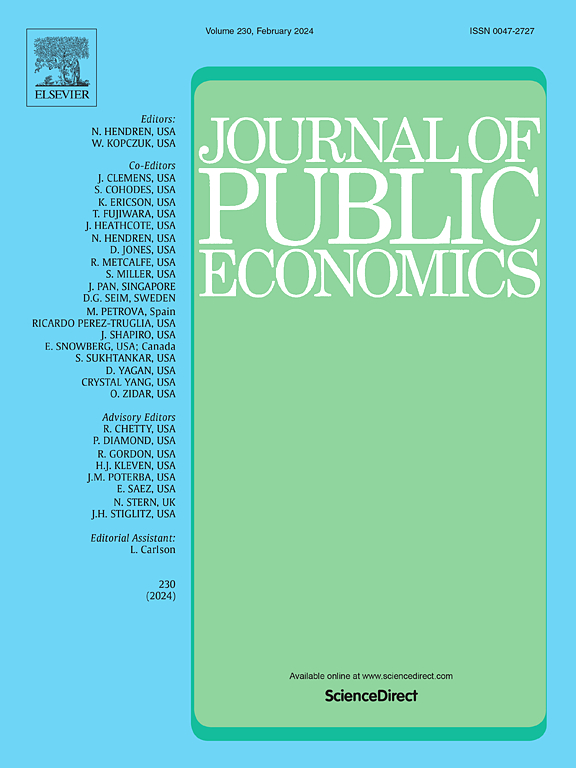Provider payment incentives: Evidence from the U.S. hospice industry
IF 3.4
1区 经济学
Q1 ECONOMICS
引用次数: 0
Abstract
Combining capitation with a cap on health care providers’ average revenue can reduce allocative inefficiency. But the cap may be undercut by health care providers who churn their patient censuses. We investigate this possibility in the U.S. hospice industry, where Medicare pays hospice programs fixed daily rates but caps their average annual revenue. By leveraging variation generated by the cap’s nonlinear design and the transition between fiscal years, we find that programs on track to exceed the cap raise enrollment rates by 5.8 % and live discharge rates by 4.3 % in the fourth quarter. But this churning falls far short of eliminating their financial penalties: it amounts to 10 % of an average program’s excess revenue at most. Marginal enrollees have longer remaining lifetimes and more fragmented hospice spells on average, suggesting weaker intrinsic demand for hospice care. We discuss the cap’s implications for market structure.
提供者支付激励:来自美国临终关怀行业的证据
对医疗服务提供者的平均收入设置上限,同时实行人头制,可以减少配置效率低下。但是,医疗服务提供者可能会降低这个上限,因为他们会对病人进行大规模普查。我们在美国临终关怀行业调查了这种可能性,在那里,医疗保险支付临终关怀计划固定的每日费率,但限制他们的平均年收入。通过利用上限的非线性设计和财政年度之间的过渡所产生的变化,我们发现,在第四季度,有望超过上限的计划将入学率提高了5.8% %,实际出院率提高了4.3% %。但是这种翻腾远远不能消除他们的经济处罚:最多相当于一个项目平均超额收入的10% %。边缘参保者的平均剩余寿命较长,临终关怀时间较分散,表明对临终关怀的内在需求较弱。我们讨论了上限对市场结构的影响。
本文章由计算机程序翻译,如有差异,请以英文原文为准。
求助全文
约1分钟内获得全文
求助全文
来源期刊

Journal of Public Economics
ECONOMICS-
CiteScore
14.10
自引率
2.00%
发文量
139
审稿时长
70 days
期刊介绍:
The Journal of Public Economics aims to promote original scientific research in the field of public economics, focusing on the utilization of contemporary economic theory and quantitative analysis methodologies. It serves as a platform for the international scholarly community to engage in discussions on public policy matters.
 求助内容:
求助内容: 应助结果提醒方式:
应助结果提醒方式:


